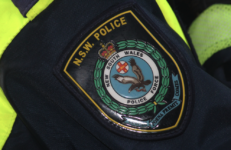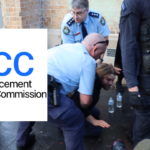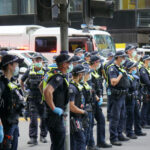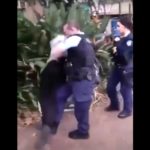Report Recommends Digital Tracking of Police Firearms, But Bigger Issues are at Play

The New South Wales Police Force conducted an internal review earlier this year after the alleged murders of Jesse Baird and Luke Davies by police constable Beau Lamarre-Condon in the inner-city suburb of Paddington, by use of a police-issued firearm.
The review found that Lamarre-Condon checked the firearm out from a police station on 16 February 2024, supposedly to have it in his possession while policing a protest that week.
However, the review also raised questions regarding whether he attended the event at all, which in turn has led to calls for new protocols for the storage, tracking and use of firearms by police officers.
Digitisation of Firearm Tracking
The review identified significant loopholes regarding the tracking of firearms within the police force, which has led to several recommendations for reform, including the digitisation of firearm register movements.
The proposed measure, it is asserted, will ensure better monitoring of movements and potentially deter officers from possessing firearms when and where they are not supposed to.
The Bigger Problems
And while the proposal may be a step in the right direction when it comes to enhancing community safety, perhaps the more significant issues include insufficient firearms training within the force, lax protocols when it comes to the use of force against members of the public and inadequate accountability for misconduct – particularly considering that, with an insufficiently resourced police watchdog which has no power to discipline let alone charge police officers with offences, police are essentially left to police themselves and routinely engage in brutality and other forms of misconduct with relative impunity.
Police Firearm Laws
Australia allows all police within the force to carry firearms personally issued to them, including detectives and highway patrol. Every police station will have a firearms room where officers can enter, get the key to their specific safe, and access their firearms. Every person who goes into the room is recorded along with the date and time.
Once a police member accesses their firearm, they must perform a set of drills to ensure it works properly. After completing the drills, they must place the gun in their holster and leave the room. At the end of their shift, they reverse the procedure.
Police are not able to access their firearms when they are off-duty. However, the lack of organisation, accountability, and tracking of firearms is a huge red flag for the entire criminal justice system. There must be ways to improve procedures to reduce the chance of a weapon going missing or being used by an off-duty officer.
Police Brutality
Police brutality is a common issue around the world, with the case of George Floyd highlighting the global concern regarding police officers over-exerting their dominance and ‘powers’ that actually do more harm than good.
And this is certainly not foreign to Australia. One of the most well-known cases of brutality occurred in 2023 when an NSW police officer was found guilty of assaulting an Indigenous boy, pushing him down to the pavement in ‘self-defence’. However, video evidence shows that the officer used an illegal leg sweep manoeuvre that was unnecessary in the incident.
This isn’t the first time Australian police have targeted certain individuals, specifically minorities or Indigenous persons, when it comes to unfair and illegal police treatment. In 2019, 19-year-old Walker, an Indigenous teen, travelled to Yuendumu from Alice Springs to attend a funeral. However, in doing so, he violated the terms of his current sentence, leading to a warrant.
When Rolfe, an officer, went to arrest him three days later, Walker stabbed him in the shoulder with a pair of scissors. Instead of retaliating to dismantle the subject, Rolfe shot Walker three times — much more than was necessary. The following two shots after the initial hit were fatal, but his police force backed his decision, stating, ‘Constable Rolfe simply followed his police training when confronted with a life-threatening situation.’
Another incident of racism and discrimination by police towards an Indigenous person that highlights the abuse of power occurred in December 2015, when 26-year-old David Gungay died in a NSW prison. David, a Dunghutti man, was captured on video saying he was unable to breathe as five officers held him down on the ground.
The similarities between this case and the George Floyd case are apparent. Multiple police officers that outnumber the subject should not be necessary to take down an unarmed and non-threatening subject. Still, excess brutality often occurs when a police force is attempting to ‘control’ someone who is of a minority or different ethnicity. The continuing issue of police brutality in Australia is one that can’t be ignored.
Police Misconduct
Similarly, police misconduct in NSW and Australia is not a foreign affair. The new firearms movement register came to be directly as the result of misconduct and murder by a former Police chief constable, so it is no wonder that there have been numerous reports of inappropriate behaviour and illegal acts by the NSW police force for years now.
Joey Orrock was a young woman who a female police officer strip-searched at a music festival. A NSW police inspector drove under the influence and crashed his car in the NorthConnex tunnel in Sydney. An ex-cop raped a 19-year-old while inside a police station. 12 and 13-year-olds were strip-searched in early 2024 by NSW Police.
These abhorrent acts by the NSW Police highlight a larger issue—how police misconduct is part of everyday interactions between the general public and the Australian police force.
Australian citizens and residents believe that the police are there to help serve the public and keep the peace. However, the high levels of trust in government officials and public servants — although that trust is slowly dwindling, and rightly so — have made it possible for the police to act outside their scope of duty.
One clear example of police acting unlawfully is when police officers can access personal information and weapons. A 2022 Commission of Inquiry in the Queensland Police Report Service showed that police officers can carry out domestic violence acts or misuse the database when it comes to family violence or stalking. Since 2020, Queensland police have used unauthorised access to personal information, along with 350 complaints in South Australia and 89 in Tasmania. The most shocking is in New South Wales, where there have been more than 1,000 complaints about unlawful access to personal information by police since 2020.
This isn’t the first time the NSW Police have been the subject of police misconduct due to disclosure of personal information, illegal arrests, trespass, prosecution, civil liberty infringements, and unlawful searches. On 5 August 2020, NSW Greens David Shoebridge called on the Department of Communities and Justice to release the data between 2016 and 2019 regarding claims over infringements the police force shouldn’t be perpetuating.
The main issue concerning police misconduct is the need for more oversight and regulation by the overarching bodies. The Law Enforcement Conduct Commission is limited in its resources to be the police oversight body, as it had to take over an already failing Police Integrity Commission. Not only does this organisation have to oversee the police’s conduct, but it also has to be at the forefront of driving change and providing a new culture.
Illegally accessing information, acting inappropriately for a police officer, and committing acts that are outside of the scope of duty are extremely concerning for the country as a whole.
Going to Court?
With police powers constantly expanding across the nation without sufficient checks and balances, issues such as brutality and other forms of misconduct have become more concerning than ever.
If police have abused their powers and charged you with a criminal offence, contact Sydney Criminal Lawyers today to arrange a free consultation with an experienced, specialist criminal defence lawyer who will fight for your rights and protect your legal interests.






